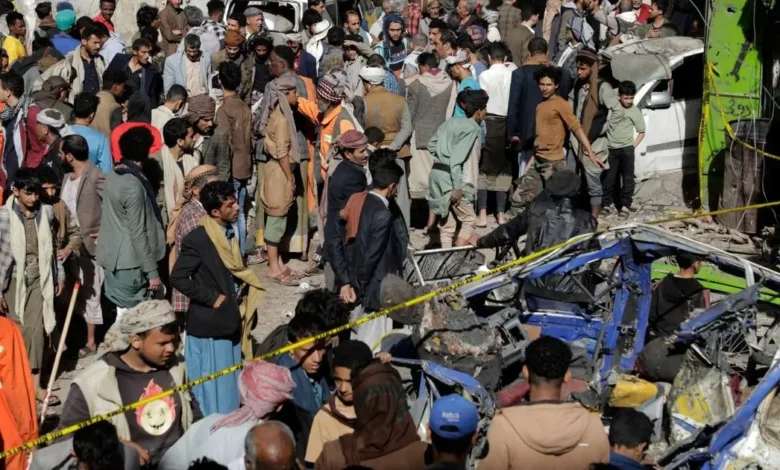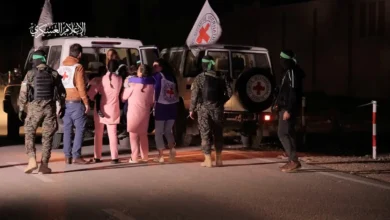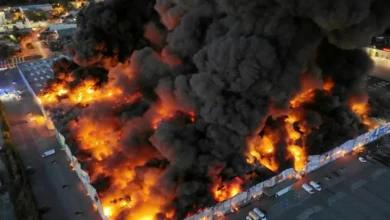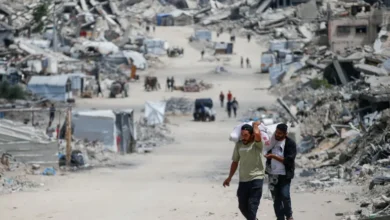At least 500 Houthis killed in US strikes over last month: Officials

The US military has quietly racked up a major toll in Yemen, killing at least 500 Houthi fighters—including top-tier operatives—since last month, according to officials and sources familiar with intelligence assessments.
While the US has conducted daily air and naval strikes for over five weeks, it has remained tight-lipped about the results of the campaign.
However, the latest assessments indicate that anywhere between 500 and 600 Houthi fighters have been killed—many of them high-ranking figures, including missile system operators and drone experts. That number is expected to rise as operations expand into new regions of Yemen, one official said.
Multiple Houthi training camps have been decimated by US strikes, with no survivors among the fighters, sources said.
Officials said the Houthis have been pressuring families of slain fighters to remain silent while only acknowledging the deaths of lower-ranking members to avoid sparking panic among their support base. In several cases, when local residents post information online about those killed, the group quickly launches disinformation campaigns across social media. This has deterred many from publicly commenting on the ongoing US campaign.
However, in one recent case, a Yemeni national took to X to claim that over 650 Houthi members had been killed. Sheikh Jamal al-Maamari, previously held captive by the Houthis, published a list of names, ranks, and locations of those he said were killed.
US operations continued into Monday night and are expected to persist, with officials warning the campaign may be long-term. Some US media outlets have reported that preparations may be underway for a ground operation to drive the Houthis out of the capital and force them out of key port cities.
Despite US officials downplaying the possibility of direct involvement in such an operation, The airstrikes are part of a multi-phase plan designed to pave the way for a potential land offensive by Yemeni government forces.
Officials say US strikes have significantly weakened Houthi air defenses and other military capabilities.
In recent days, the group has killed dozens of Yemeni civilians in botched attacks against the US military, though it remains unclear how many civilians have died as a result of US strikes. Officials have confirmed that civilian casualties have occurred during the operations.
The US campaign has also faced criticism from some US lawmakers over its high cost and lack of public information about the impacts of the strikes.
The US has lost at least five MQ-9 Reaper drones—each valued at around $30 million. The Houthis claim to have shot them down, some of which were operated by the US Air Force while others were property of other American government agencies.
Still, the campaign—ordered by US President Donald Trump and Pentagon chief Pete Hegseth—appears to have severely damaged Houthi weapons infrastructure, including storage facilities and manufacturing depots.
Just last week, the United States Central Command (CENTCOM) announced it had destroyed a fuel port in western Yemen, part of efforts it says are meant to cut off the group’s revenue sources.
Yemen’s Information Minister Moammar Al-Eryani described the US military’s strikes as a natural response to Houthi attacks on international shipping and threats to global trade. He praised the Trump administration’s handling of the crisis as a “strategic shift in addressing this issue.”
Al-Eryani said that the operations have been precise and have targeted “significant elements of Houthi military infrastructure, including command and control centers, training camps, weapons depots, and communication facilities used to coordinate their attacks.”
He also praised the impact of the campaign, noting a visible decline in the Houthis’ ability to launch missile and drone attacks, particularly in the Red Sea and Bab al-Mandab.
Al-Eryani revealed that the Yemeni government had also confirmed the deaths of several senior Houthi leaders from the group’s first, second, and third tiers. “These include military leaders as well as masterminds behind maritime attacks and arms smuggling operations from Iran.”
He added: “This is a clear indicator of the campaign’s effectiveness. From this standpoint, we support the continuation of the campaign as part of a broader deterrence strategy aimed at curbing the militia’s behavior and ending the use of Yemen as a launchpad to threaten regional and international security.”
Separately, Al-Eryani emphasized that it was important for the American public to understand the broader roots of instability in the region. “The current instability in the Middle East is a result of years of international negligence toward Iran’s and its behavior in the region,” he said. “Silence and hesitation in confronting this threat have allowed it to grow unchecked.”
Looking ahead, Al-Eryani said that a continued and expanded approach was needed to include political, military, security and economic support for Yemen’s internationally recognized government.
“This is not just Yemen’s war. It is a battle for the international order, for freedom of navigation, and to protect the region from the expansion of the Iranian regime and its terrorist militias—militias that thrive on Iranian weapons and chaos,” he said.










